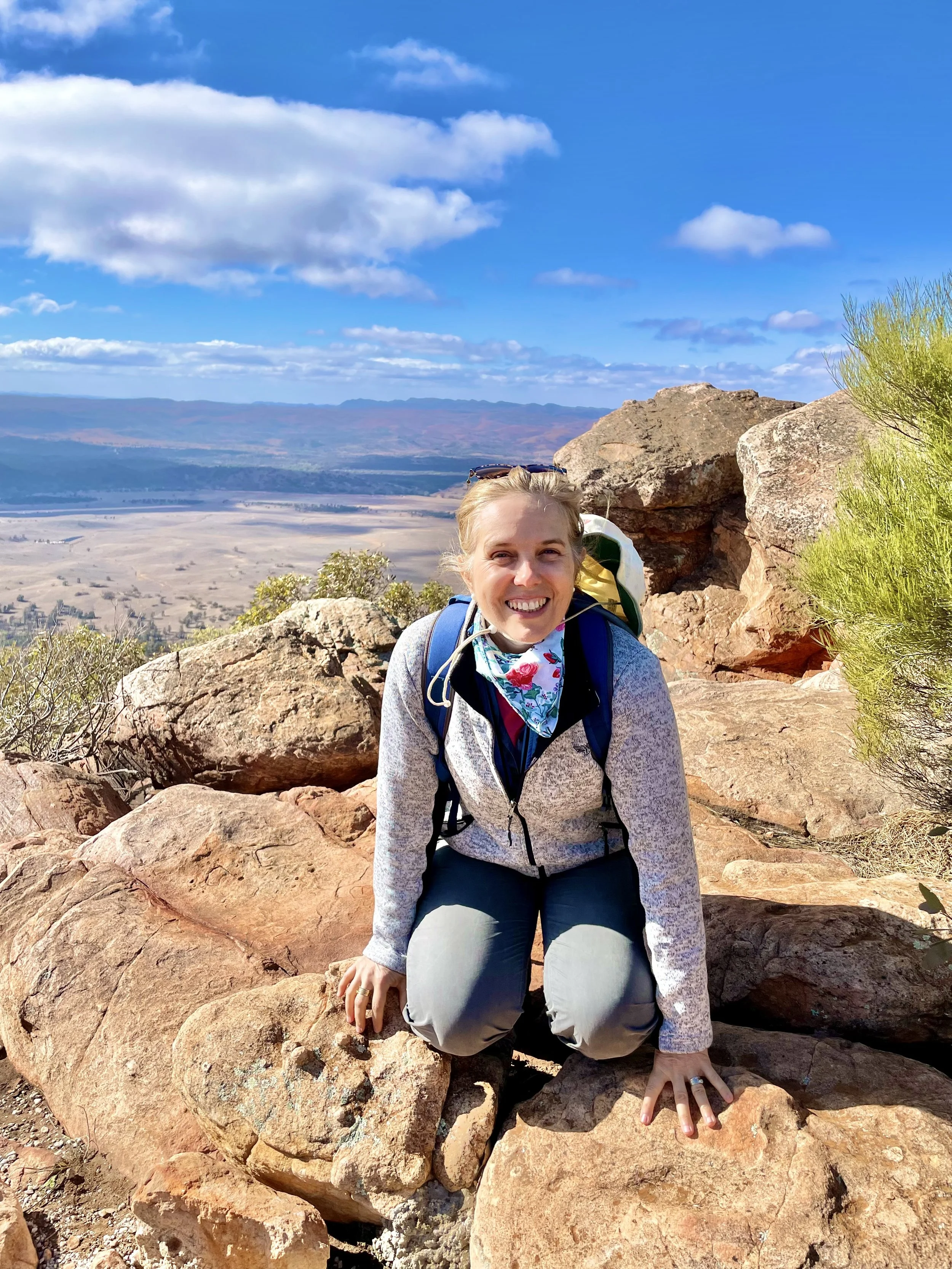Strong Leaders Don't Just Think Ahead - They Stay Right Here
Why presence is essential to leading with adaptive stability
“In today’s rush we all think too much, seek too much, want too much and forget about the joy of just being.”
Last week, I was hiking a steep mountain track in the Flinders Ranges. The landscape was rugged and beautiful—red rocks, wildflowers, and eagles overhead. But the trail was tough. Narrow. Slippery. Relentless.
As I focused on each step, I was reminded how important it is to be present. I had to watch my footing, notice the path ahead, and stay balanced. Looking too far up the mountain or thinking about work waiting back home would have thrown me off—physically and mentally. I knew if I didn’t fully switch off, I wouldn’t come back restored.
Presence matters—on mountain trails, and in leadership. It’s a core part of adaptive stability. It helps us hold steady through change, with clarity and calm.
Your presence matters
Leadership today isn’t a straight path—it’s a shifting track, like that mountain trail. When you’re navigating complexity, uncertainty and pressure, presence becomes your anchor.
Being present doesn’t mean ignoring what’s ahead or pretending things aren’t changing. Strategic leaders absolutely need foresight and situational awareness. They think ahead, prepare for multiple possibilities, and make smart, proactive choices.
But they also know that anchoring in the present moment is essential. Presence is the foundation for good judgement, trust, and human connection. It helps us make better decisions—not from reactivity, but from clarity. And it allows others to feel seen, heard, and safe.
When we’re present, we listen more deeply. We lead meetings that are purposeful, not performative. We recognise when someone’s energy has shifted or when a situation needs attention before it escalates. We notice small wins. We bring our attention fully to the conversation in front of us, even if our calendar is full.
In contrast, when we operate from a distracted state—when we’re physically in one place but mentally somewhere else—we erode trust. We miss key details. We come across as detached or unavailable. Over time, our teams begin to disengage.
The research on mindful leadership
Studies in mindful leadership have found that presence increases emotional intelligence, strengthens resilience, and improves decision-making under pressure. Research from Harvard and INSEAD links mindfulness practices with greater self-awareness, reduced burnout, and more compassionate leadership. A 2022 Deloitte report found that leaders who regularly practise presence and self-regulation are more likely to foster high-performing, psychologically safe teams.
Presence is also contagious. A leader who is present creates an environment where others feel able to focus, reflect, and contribute without constant urgency or noise.
We notice when presence is prominent and when it’s absent
Nokia’s decline is a cautionary tale of company leaders who failed to be fully present—who became so focused on scaling, strategising, or looking far ahead that they missed signals on the ground. While once a market leader, the company’s leadership team disconnected from both frontline feedback and customer trends. As a result, they missed critical shifts in smartphone design and user expectations. By the time they tried to catch up, the market had moved on.
By contrast, Dr. Atul Gawande, surgeon and author, is widely known for his thoughtful leadership in both operating rooms and global health policy. His work—from improving surgical safety to leading end-of-life care reform—reflects a deep, attentive presence. In high-stakes environments, Gawande listens carefully, notices what others overlook, and asks questions that reframe problems. His ability to stay present with patients, colleagues, and systems has helped drive meaningful change—not just through data, but through human connection.
How do leaders practise grounded presence?
So, what can help leaders stay grounded, even when work life is chaotic? Presence is a discipline—built through daily, conscious choices. Try these small, strategic acts of attention:
Create small rituals to pause and centre—before a meeting, after a tough conversation, or at the end of the day.
Limit multitasking. Give your full attention to the task or person in front of you.
Notice your environment. A few deep breaths, a glance out the window, or a walk between meetings can reset your focus.
Set clear boundaries. Being ‘on’ all the time fragments attention and makes you mentally tired. Protect time to rest and think.
Name what’s real. If your mind is racing with uncertainty, acknowledge it. This helps you respond more deliberately rather than reacting automatically.
One leader I know begins every team meeting with a two-minute grounding. Each person shares one word about how they’re arriving. That simple check-in transforms the space. It strengthens emotional awareness, calibrates expectations, and builds connection. It’s a simple but powerful act of leadership presence.
A reflection to carry forward
Where in your leadership life are you most present—and where are you most distracted?
As you move through the week, notice: What helps you arrive fully to the moments that matter?
Presence stabilises your leadership. It clears the noise so you can lead with foresight, compassion, and strength that sustains.
You've got this. Stay grounded. Stay present. Keep climbing,

